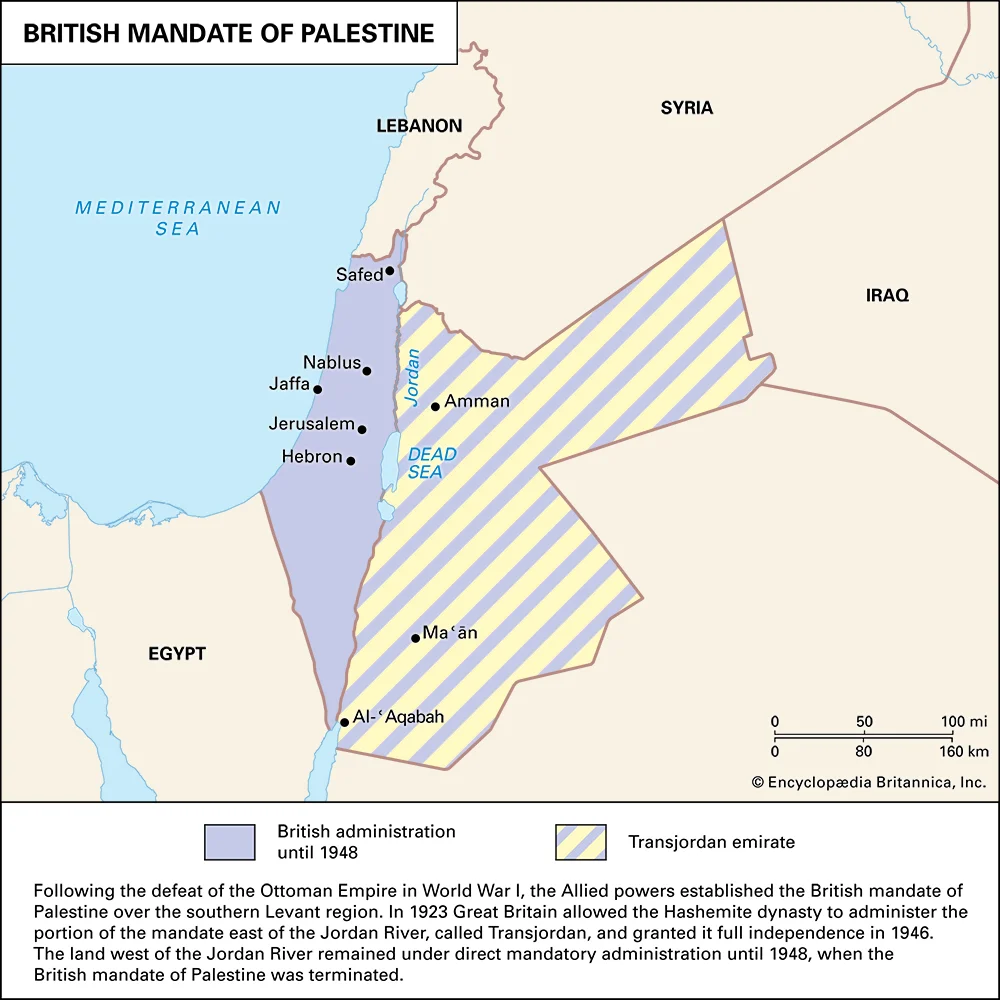What are the solutions to the Palestine-Israel conflict?
- Sebastian Palacios.

- Oct 28, 2023
- 7 min read
Updated: Nov 1, 2024
At the start of the 19th century, waves of Jewish emigration to Ottoman Palestine (present-day Israel and Palestine) increased as a result of growing nationalism and anti-semitism in Catholic Europe. The Islamic Ottoman Empire offered refuge to those Jews in the Middle East, and co-existence with the Muslim population was fairly good.
Then, in the middle of the 19th century, Great Britain promoted more immigration of Jews from Europe to Ottoman Palestine in order to increase its influence in the area by acting as "protector country". With that, the Jewish population in Ottoman Palestine grew from 7 thousand to 94 thousand between 1800 and 1914, whereas the Muslim population grew from 246 thousand to 526 thousand in the same period of time.
After WW1 and the defeat of the Ottoman Empire, London created in 1920 the British Mandate of Palestine as a colony, then gave the eastern part to the Arab Hashemite dynasty in 1923 while keeping the western part. By 1947, the Jewish population reached 630 thousand in the British Mandate, which was half of the Muslim population. As a result, tensions between Muslims and Jews grew steadily during this British mandate, and even the main nationalistic Arab mouvements in the area came to support Hitler militarily and politically.
The Holocaust and the Allied victory in WW2 were the key factors that finally made possible the plans of creating a Jewish state in the Middle East. The British accepted to leave the area by 1948, so the United Nations proposed then a partition plan: Around 55% of the land of British Mandatory Palestine would be given to a Jewish state, and 45% to a new Arab Muslim state.
An overwhelming majority of Jews all over the world accepted the UN proposal, whereas almost all the Arab nations rejected it. Their main arguments against it were that Muslims doubled the Jewish population, Jews owned only 6% of the Palestine Mandate land, and the most fertile land would be given to the Jewish state. Also, most of the Arab mouvements rejected the simple idea of allowing a Jewish state to exist as a neighboring country.
In these circumstances, Israel declared its independence in May 1948, but all the neighboring Arab countries responded by invading Israel in the few days that followed. Surprisingly, Israel won the 1948-1949 war, expanded its borders by 22% from the UN plan, including taking West Jerusalem. Egypt annexed the Gaza Strip, and Jordan annexed both the West Bank and East Jerusalem. An important consequence of this war was that more than 700,000 muslims were expelled from their homes by Israeli forces towards Gaza and the West Bank. As a result, many became stateless persons. At the same time, some 600,000 Jews were also expelled from the neighboring Arab countries and ended up finding refuge in Israel.
Then, a major turning point in the conflict came with the Six Days War in 1967, fought again between Israel and all its Arab neighboring countries, because Egypt wanted to block Israeli ships from using the Suez canal. The result was an impressive victory for the Jewish state, as it annexed a territory four times its previous size: the Sinai peninsula, Gaza, the West Bank, and the Golan Heights. In order to secure a long-standing peace with Egypt and Jordan, Israel agreed to retreat from the Sinai peninsula in 1982 and resolve water disputes, but more than 300,000 Muslims were expelled from their homes in the West Bank. Israel allowed the Arab inhabitants of East Jerusalem and the Golan Heights to get full Israeli citizenship, but the vast majority in both territories refused it. Additionally, Israel has annexed the whole city of Jerusalem as its capital, while Palestinians claim East Jerusalem for the capital of their state, which is one of the most contested issues in the peace agreements.
Later on, the Oslo Accords of 1993 settled the creation of the Palestinian National Authority, which would be in charge of the local governance in the West Bank and the Gaza Strip, and recognized Israel's right to exist, but failed to create a Palestinian state. This was an important event because no Israeli government had accepted the creation of a Palestinian state between 1967 and 1993.
However, this peace process was damaged with the assasination of the Prime Minister of Israel, Yitzhak Rabin, by a Jewish ultra-nationalist who opposed the Accords, and terrorist attacks from religious extremists on both sides increased. Also, the peace deal became impopular in Israel because four times more Israelis civilians were killed (1600) in the 25 years after the Oslo Accords compared to the 25 years prior to that. The killing rate for Palestinians increased as well, despite that Israel retreated from Gaza in 2005 as part of the peace process.
Today, these are the positions of important actors regarding peace proposals:
•Since Netanyahu took the power in 2009, his governments have claimed that the creation of a Palestinian state is a danger for Israel, and if a such must be created, it shall be demilitarized. Also, Jewish settlements in the West Bank have increased as never before since 2009, and Netayanhu depends on the extreme-right to govern.
Israel does not agree to retreat to pre-1967 borders with the argument that those territories were acquired with a legal war effort, and that these proposed borders would be very difficult to defend from a military point of view.
•The PNA (West Bank) wants that the borders should be as before the war of 1967 and that Muslim refugees that were expelled and their descendants (5 million people) should be able to return to present-day Israel as full citizens. Israel views that right to return as a threat to its existence as a Jewish state and believes those refugees should go to the Palestinian state instead. Also, the PNA demands that Jewish settlements in the West Bank and East Jerusalem must stop, and as a starting principle, no Jew should be allowed to live in Palestine.
•Hamas (Gaza) wants to erase Israel from the map and kill all the Jews from the Middle East.
•The United Nations has passed many resolutions with an overwhelming majority supporting the creation of two states, one Palestinian and one Jewish, with the pre-1967 borders, and pointing that the Jewish settlements in the West Bank are illegal according to international law regarding the transfer of people into occupied territories.
•Egypt and Jordan support the UN resolution and don't want to participate in a solution by which Egypt would annex Gaza and Jordan the West Bank. The reason for this is because it would break their promises to the Palestinians that they would get their own state, and because Egyptians and Jordans fear growing extremism that would follow those refugees: After Lebanon accepted many Palestinians as citizens, Islamic terrorist organizations, like Hezbollah were able to influence national politics, and those refugees are very prone to criminality (72% of Palestinians in Denmark have committed a crime).
•The EU reiterates its position that all expanding Jewish settlements into occupied Palestinian territory are illegal. Today, more than 700,000 of those Jewish settlers live in the West Bank. Also, the EU does not recognise any changes to the pre-1967 borders, including in Jerusalem, other than those agreed by both sides. At the same time, the EU considers Hamas to be a terrorist organization that keeps the power in Gaza by non-democratic means.
•The US was firstly a timid supporter of Israel until the 70s, as it even had an embargo of arms against Israel during the 1967 War. Moreover, Israel attacked the USS Liberty Navy ship, killing 34 US crew members, while navigating on international waters outside Egypt. Israel apologized that it was a mistake but the real reasons of this attack are still debated.
However, today Israel is the biggest recipient in the world of US military aid (4 billion dollars annually), and since 1972, the United States has also enabled Israel to borrow from commercial US banks at lower rates. Also, the United States has used its UN veto power 42 times against resolutions condemning Israel for war crimes. Then, with Trump, the US became the first country to recognize all Jerusalem and the Golan Heights as part of Israel. At the same time, the US has historically opposed the expansion of Israeli settlements in Palestine. Even Trump, the most pro-Israeli president ever, considered that this policy was negative for the peace process.
Given the expansion of Jewish settlements in the West Bank, it is hard to imagine that a classic two-state solution is feasible by now. It is worth to note that the majority of Palestinians (80%) oppose the sole right of Israel to exist, and 65% of Israelis think that a two-state solution is impossible. So what are the options?
•A one-state solution that includes Israel, Gaza and the West Bank. But this is mostly rejected by Israel because the Muslims would be a majority in this new country.
•The West Bank could be annexed by Israel, absorb all the Arab population, and give them Israeli citizenship. With this, Jews would still be a majority. Israel defends this position because since Jordan was originally created as the Arab state in the British Mandate of Palestine, then Israel should annex the remaining part. Gaza could become a new Islamic state, or annexed by Egypt, after Hamas had deposed their arms.
•Egypt and Jordan refuse to annex Palestinian territories and give citizenship to those populations, but economic aid from the UN could persuade such a move. However, this would break the promise to Palestinians that they will have their own country, even if Palestine as a country has never existed.
•Israel annexes the West Bank and gives the region plenty of autonomy, like Catalunya in Spain. Gaza could become an independent state.
•A confederation where both independent states share powers in some areas and Israelis and Palestinians have residency rights in all the country. But the radical elements on both sides, especially given the power of Hamas, make this deal almost impossible in the medium term.



















Comments